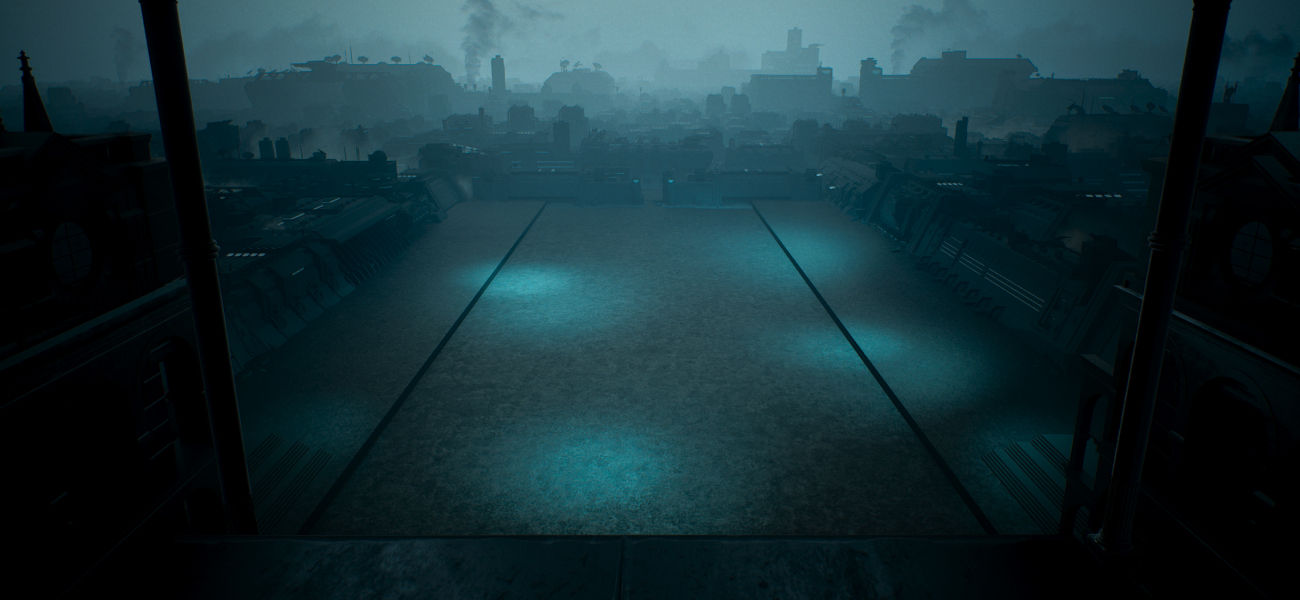Falling in Reverse, Prologue Study.
When Falling in Reverse released the music video for their single Prologue, I was immediately captivated by its striking visuals. At the time, I was exploring techniques in Unreal Engine for creating massive animated crowds while maintaining optimized performance. The video quickly became a key source of inspiration, offering valuable insight into balancing scale and detail in complex scenes.
I studied references from the music video and bts footage to analyze costumes, lighting, and camera work.
Using PureRef, I chose a key scene to recreate in Unreal Engine,
focusing on its atmosphere and intricate visual details.
The entire environment was built using assets from Kitbash3D, which proved to be a huge time-saver without sacrificing quality. For lighting and atmosphere, I combined Ultra Dynamic Sky with William Faucher’s EasyFog enhanced with custom smoke textures, aiming for a subtle, industrial post-modern look.
I use PCG (Procedural Content Generation) to build the army with Mixamo models, leveraging Trash Praxis’ tool to convert skeletal meshes into static meshes with animations baked into their materials. This smart approach creates realistic crowds while keeping the poly count remarkably low.
For the main characters, I used the Fab Paragon: Kallari model, modifying it by removing the hood and reducing the head size.
I modeled the helmet in Cinema 4D and attached it to each skeleton
so it tracked the animation properly.
I used just two Mixamo animation tracks. The walk cycle drove all the main characters moving through the frame, with each instance offset to give them their own pace. The distant army relied on the idle animation, with random start times per character to keep the motion organic. In the end, those background loops are barely noticeable,
but I like to think you can still feel them.
Everything was rendered and exported directly from Lumen.
For someone used to polishing everything in post,
this was a mind-blowing experience.
To wrap it up, here’s a making-of covering the entire process.







